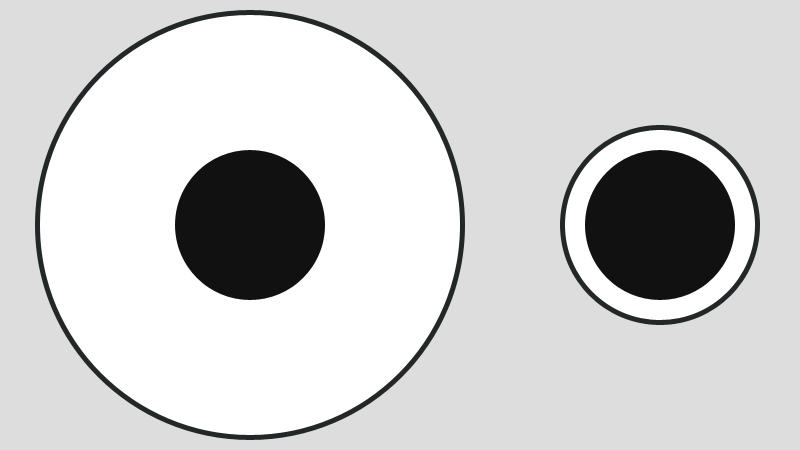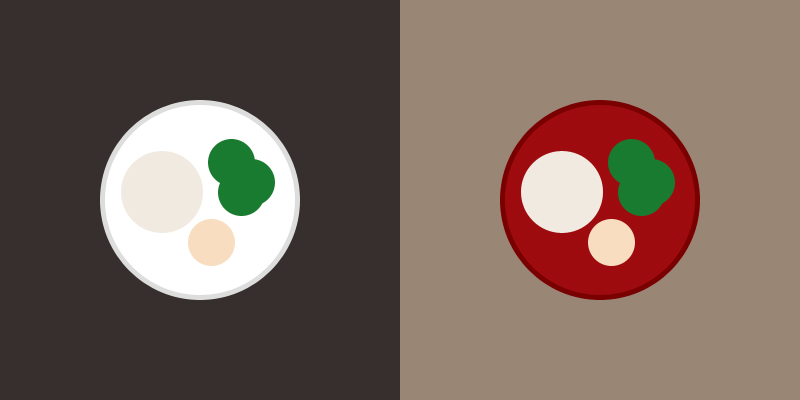
You may think that you decide how much food you eat, but you don’t.
A recent study published in the Journal of Consumer Research has discovered two ways that your mind tricks you into eating more (or less) without you knowing it. If you’re looking to shed a few pounds, then understanding these insights could offer a painless way to do it.
When it comes to eating less, researchers have long known that a simple way to cut calories is to use a smaller plate. In one experiment, conducted by Brian Wansink from Cornell University and Koert van Ittersum from the Georgia Institute of Technology, it was discovered that a shift from 12–inch plates to 10–inch plates resulted in a 22% decrease in calories. Assuming the average dinner is 800 calories, this simple change would result in an estimated weight loss of more than 10 pounds over the course of one year.
While studies have proven over and over again that smaller plates lead to smaller portions the reason for this reduction had been unknown until recently. Wansink and van Ittersum have concluded that smaller plates cause us to eat less thanks to a powerful optical illusion known as the Delboeuf Illusion. The illusion works because we think things are smaller when we compare them to things that are larger.
If you put a small piece of food on a large plate, your mind will tell you that you are eating a small portion and you will automatically put more food on the plate. However, if you put that same piece of food on a small plate, your mind will tell you that you are eating a large portion and you’ll stop adding food. The image below depicts the Delboeuf Illusion and how it applies to food.

The circles of food are the same size on each plate. Either way, you are eating the same amount of food. However, forcing yourself to put a small portion of food on a large plate will drain your willpower and motivation. From a psychological standpoint, it feels like you are depriving yourself. Meanwhile, the same portion feels bigger and more filling when you see it on a small plate.
The Delboeuf Illusion has been proven to work for a wide range of shapes, including squares, rectangles, and triangles. In other words, it doesn’t matter what you’re eating, your mind will still play tricks on you when it comes to the relative size perception of your portion and your plate.
Thanks to the Delboeuf Illusion, downsizing your plates will reduce the number of calories you are eating and allow you to feel satisfied at the same time. Forget about willpower and motivation and let the plate control your portion for you. You can safely and happily eat a full plate of food and still lose weight, just start with a smaller plate.
The size of your plate isn’t the only thing that determines how much you eat. Wansink and van Ittersum have discovered that the color of your plate matters too.
The two men conducted an experiment where they examined the relationship between plate color and serving size. The researchers instructed one group of participants to serve themselves pasta pre–mixed with a red tomato sauce and a second group to serve themselves pasta pre–mixed with a white Alfredo sauce. Each person was randomly given a white plate or a dark red plate.
The researchers discovered that when the color of a participant’s plate matched the color of their food, they served themselves almost 30% more. In other words, if you ate pasta with red tomato sauce on a dark red plate, you ate almost 30% more than you would if you had used a white plate. The same was true for eating pasta with a white Alfredo sauce on a white plate compared to a dark red plate.
The reason behind this drastic difference in serving size is that when the color of your food blends in with the color of your plate, then the amount of food doesn’t appear to be as large. The result is that you will end up scooping more food onto the plate. Look at the color contrast in the image below to get a sense of this effect.

The higher contrast in plate color to food color will automatically prevent you from throwing an extra scoop onto the plate. Typically, this isn’t something you will think about, your mind will just realize that you don’t need another serving. You don’t have to rely on motivation because the color of the plate is helping your mind make the decision for you.
I tend to eat a protein–heavy diet with a moderate amount of carbohydrates and fats.
Based on the research, if I had to choose a color for my dinner plates, I would choose dark green. Presumably, this color would contrast with most foods that I would want to limit: pastas, potatoes, cereals, and grains. At the same time, I would enjoy a positive effect from the dark green color: over–serving helpings of broccoli, spinach, and leafy greens.
If you want to change the way you eat, then you have two options.
The first option is to remember to eat differently, which is more commonly known as dieting. Dieting is hard and depriving yourself of certain foods drains your willpower. As your motivation dwindles, the likelihood that you will stick to your diet drops. Human beings are creatures of habit and overriding your current eating patterns is a difficult thing to do. The reason most diets fail isn’t because we switch to the wrong foods, it’s because we don’t actually follow the diet over the long term.
The second option is that you can shift your eating behavior by designing the environment around you. Changing certain cues, like the color and size of your plate, is a simple way to take advantage of the way your mind works and alter your eating patterns without actively thinking about it. If you’re looking to lose weight, then making a few changes to your environment can make life much easier.